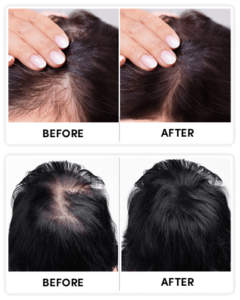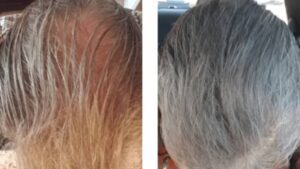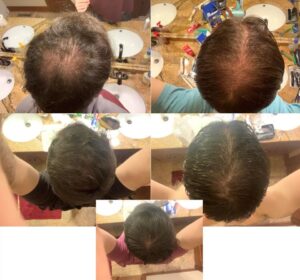Female Hair Length at Work: A Historical Perspective on Changing Trends

Introduction to Female Hair Length at Work
In the world of work, how long a woman's hair is has been the topic of both subtle and open debate, often reflecting the bigger picture of societal norms and expectations. It might seem like a small detail, but the length of a woman's hair can say a lot about her identity, power, and how she fits into workplace dynamics. If we take a stroll down memory lane, we can see that these hair trends have always been a window into changing cultural attitudes and the ongoing tug-of-war between personal expression and professional decorum.
Looking back at the history of hairstyles, we're offered intriguing insights into gender roles, social expectations, and even economic shifts. Hair isn't just a way to show individuality; it also plays a big role in how women are perceived in their professional lives. Understanding these trends is just as important now as it was decades ago, as workplaces continue to evolve, juggling tradition with the growing demand for diversity and inclusion.
Early 20th Century: Female Hair Length at Work
At the dawn of the 20th century, the 'Gibson Girl' came onto the scene, embodying the ideal feminine beauty of the era. Her long, flowing locks were a sign of elegance and youth, fitting snugly with societal expectations of women as caregivers and homemakers. But as more women entered the workforce, practicality started to question the feasibility of such lengthy styles.
And then came the bob cut. By the 1920s, this style was all the rage among modern women, symbolizing a move towards independence and a break from the old ways. Short hair wasn't just a fashion choice; it was a bold statement of autonomy and a challenge to the status quo. However, despite its popularity, many workplaces still preferred a more conservative look, leaving women to walk the fine line between personal style and professional acceptance.
Watch Your Hair Come Back FASTER Than You EVER Dreamed Possible

WITHOUT Expensive Medications, Lasers, or Painful Surgeries!
Learn moreMid-20th Century: Transformations in Female Hair Length at Work
World War II shook things up in a big way, especially when it came to women's roles, including their hairstyles. With many women stepping into jobs traditionally held by men, practicality became the name of the game. Shorter, more manageable hair became a necessity, reflecting the dual demands of home and work life. The 'Victory Roll' became a hallmark of this era, blending style with functionality.
The 1950s, though, saw a return to more conservative styles, with longer, sleeker hairstyles taking center stage. This period was all about stability and traditional gender roles, mirrored in how women were expected to wear their hair at work. The beehive, which popped up in the late '50s and early '60s, was a testament to this, offering an elaborate yet controlled look that matched the era's ideals.
1960s and 1970s: Revolutionary Changes in Female Hair Length at Work
The feminist movement of the 1960s and 1970s shook things up, challenging societal norms and pushing for gender equality. This era saw the pixie cut come into play, a daring departure from the past. It stood for liberation and was quickly adopted by women eager to express their autonomy.
During this time, longer hairstyles also made a comeback, reflecting the diverse expressions of femininity and a rebellion against rigid norms. The workplace started to embrace a wider range of hair lengths, mirroring the broader cultural shifts towards personal freedom and diverse expressions.
Top Trichologist: Do This To Your Scalp To Regrow A Full Head Of Hair

Completely natural and dirt cheap way that makes it possible for you to finally regrow all your hair back.
Try this at home1980s to 1990s: Female Hair Length at Work in the Corporate World
The corporate boom of the 1980s ushered in the era of power dressing, where appearance became a key part of professional identity. Hair was a crucial piece of the power puzzle, with styles that screamed authority and confidence. The big, bold looks of this decade were both a fashion statement and a professional necessity.
The influence of media and pop culture during this time can't be overstated. TV shows and movies played a big role in shaping ideas about workplace hairstyles, as women looked to emulate the successful female professionals on screen. By the time the 1990s rolled around, there was a noticeable shift towards a wider array of styles, reflecting a growing acceptance of diversity in the workplace.
2000s to Present: Modern Perspectives on Female Hair Length at Work
The new millennium has brought a refreshing shift towards embracing natural hair and celebrating individual expression. The rigid rules of the past have loosened, paving the way for a more inclusive approach where personal style is seen as an asset rather than a hindrance in professional settings.
Workplace policies have caught up with this change, with many companies recognizing the importance of allowing employees to express their cultural and personal identities through their hairstyles. This era champions the uniqueness of each individual, advocating for authenticity and self-expression as core components of professional identity.
Why The Ancient Samurai Warriors Never Lost Their Hair…

guaranteed to work for any men or women out there...
Watch nowChallenges and Considerations: Female Hair Length at Work Today
Even with these strides forward, women still face the challenge of balancing professionalism with personal style choices. Navigating cultural norms can be tricky, as expectations vary across industries and regions. Social media adds another layer to this dynamic, influencing trends and shaping what's considered appropriate or fashionable.
Women today have a lot to think about when deciding on a hairstyle, from personal comfort to workplace culture and societal expectations. While progress has been made, the journey towards complete freedom of expression in professional environments continues, shaped by ongoing discussions about diversity, inclusion, and representation.
Conclusion: The Future of Female Hair Length at Work
The future of female hair length at work looks set to mirror the broader trends of inclusivity and personal choice. As workplaces become more diverse, there's a growing recognition of the need to accommodate various styles and preferences. Future trends suggest a continued move towards authenticity and embracing individual identities.
Ultimately, the role of personal choice in determining hair length and style can't be overstated. Empowered by past struggles and triumphs, women today are redefining what it means to present themselves professionally, using their hair as a canvas for self-expression and identity.






